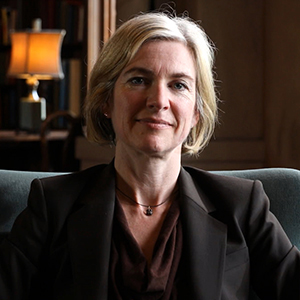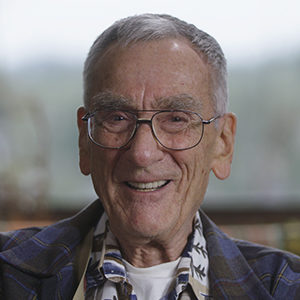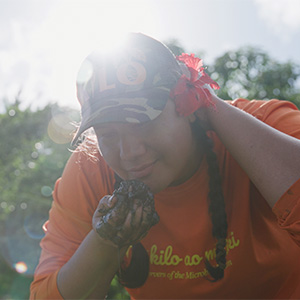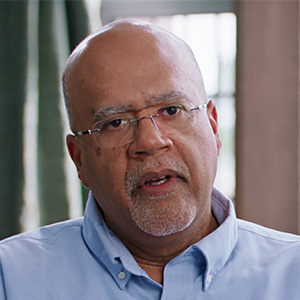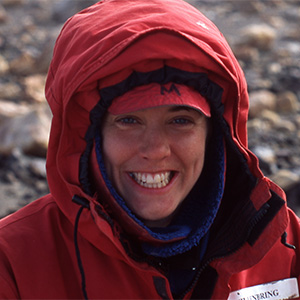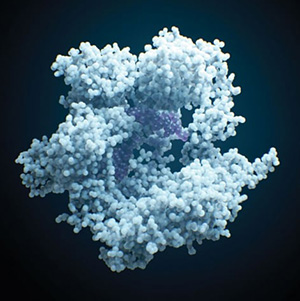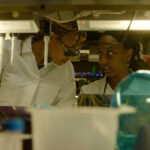Line Bay, Ph.D.: I don’t think I realized what a strong affinity I had for nature until I started scuba diving.
Man on boat: Bucket bucket? Bucket? You’re not gonna move anything all right?
Bay: I’m from Denmark. The wilderness is about the same square area as like our highways. So there’s not a lotta wilderness there, so I left after high school in search of sort of wild places and new adventures.
I started scuba diving and that was kind of it for me. I just could not believe that I saw. My mind was blown away. It’s a humbling experience actually. You realize that you’re very small and insignificant.
Actually I started off studying fish. Then it was only after my PhD that I turned my attention to corals. They are incredible animals actually. A lot of people are surprised to hear that they are animals. They’re often thought of as rocks. They live in close symbiosis with microalgae that live inside their tissues. And these microalgae will use the sun’s energy to photosynthesize and provide corals with nutrition. These algae actually give the coral a lot of their color.
Corals are the trees of the rainforest if you like. They are truly magnificent ecosystems. I wish we didn’t have to think about the future of the Great Barrier Reef. But that’s just not the reality that we’re facing. Climate change is the biggest threat to coral reefs. As the ocean warms the corals experience heat stress. The algae that they have living in their tissues will be expelled. And once they’re lost out of their tissues they look white, so what you can see is actually the skeleton shining through the tissues.

Corals can recover if the environment returns to normal, but it’s when the disturbances become massive and very frequent that we have to start worrying and that’s what we’re seeing. Unless we take action and really think outside the box, it’s very hard to see a really strong future for coral reefs anywhere. I think we have a responsibility to look at all options on the table and genetic engineering is one of those tools.
Can you breed more temperature-tolerant corals in the lab? You really only have one or two chances every year to get it right. The reproduction of many coral species only happens once a year, and it often happens only over a couple of nights every year. When it’s just about to happen, we identify the corals that look like they’re about to spawn. We bring them back into the lab. And then we breed them here.
Some species are just remarkably synchronized. They will spawn down to the exact minute on the same night after the full moon of the same month every year. It’s just incredible. Once we know the genes that are involved in the temperature tolerance of corals, we use the CRISPR-Cas system to knock out or disable certain genes. And then we look at how the organism performs. The next step will be to see whether we can edit those genes to increase the temperature tolerance.
The general population would probably be very concerned about the idea of modified organisms in the environment. I think it’s important to keep in mind that doing nothing on coral reefs is not a risk-free option either.
Ryan Phelan: We have to figure out how to help the coral because we’re responsible for warming the ocean. What we love about nature is this notion that humans don’t have anything to do with it. And it’s really kind of an illusion.

Phelan: There’s really two camps, those who feel that you can intervene in nature and those who say let nature take its own course. Traditionally, environmentalists have come out of this ethos with Ansel Adams and all the classic photos of Yosemite. Think of pristine wilderness. Protect that land, protect those ecosystems. That’s conservation.
These incredible national monuments that we go to, they’re not just empty places left uninhabited. They have a whole cast of characters maintaining that nature for us. We have a responsibility to use our human ingenuity and our wherewithal to be responsible stewards, and sometimes it’s leaving nature alone, and sometimes it might be intervening.
You can see the trends on extinction. It’s just this sad declining line. Once you realize the magnitude of humans’ impact on the environment and you realize that there’s new technology that can actually help improve the condition potentially for other species, it’s hard not to imagine, “Could you actually bring species back? How do you create a more biodiverse and really bioabundant planet?”
Bay: We’re looking at a world that’s warming. We need to take action on climate change, but even if we fix that tomorrow, the world will continue to warm for at least 20 or 30 or 40 years. And so what will happen in that intervening time to these magnificent ecosystems?
P. A. Cleves, A. I. Tinoco, J. Bradford, D. Perrin, L. K. Bay, J. R. Pringle, Reduced thermal tolerance in a coral carrying CRISPR-induced mutations in the gene for a heat-shock transcription factor (2020)
van Oppen M.J., Oakeshott J.G., A breakthrough in understanding the molecular basis of coral heat tolerance. (2020)
iBiology/Youreka Science: CRISPR: A Word Processor for Editing the Genome
National Geographic: Climate-resilient coral species offer hope for the world’s reefs
The Conversation: Explainer: mass coral spawning, a wonder of the natural world
Nancy Knowlton iBiology talks (2012): Coral Reefs and Climate Change
Executive Producers: Elliot Kirschner, Sarah Goodwin
Producers: Regina Sobel, Shannon Behrman
Cinematographers: Jimmy Purtill, Dean Miller, Derek Reich
Editor: Regina Sobel
Interviews: Adam Bolt
Graphics: Chris George, Maggie Hubbard
Music: Marcus Bagala, Keegan DeWitt


